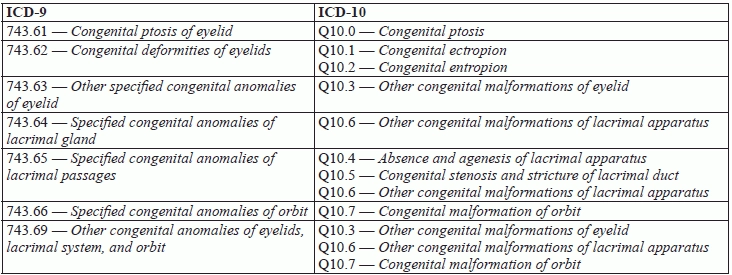Get ready: Implementation date is still set for this October.
Unlike many of the ICD-10 code sets we’ve seen, the new diagnosis codes that will replace ICD-9’s 743.x (Congenital anomalies of eye) series do not expand greatly on the original set. When the switchover happens, coders will look to ICD-10’s Q10.- (Congenital malformations of eyelid, lacrimal apparatus, and orbit) series.
It’s unclear why these codes aren’t specific to right, left, both, or unspecified eyes, says Maggie M. Mac, CPC, CEMC, CHC, CMM, ICCE, AHIMA-approved ICD-10 CM/PCS trainer and president of Maggie Mac-Medical Practice Consulting in Clearwater, Fla. However, “the modifier for the CPT® code would probably pick up the anatomical site since many of the CPT® codes are unilateral and need an RT/LT/50,” she says. “So, that information would be specific in the CPT® code rather than the ICD10 code.

Get ready: Physician group lobbying attempts did not succeed in adding a two-year ICD-10 delay to the federal spending plan passed Dec. 15, 2014. Barring any other unforeseen changes, that means come Oct. 1, your practice needs to be fully geared-up for ICD-10.
For more information on the ICD-10 conversion, as well as specific ICD-9 to ICD-10 code bridges, visit https://www.aapc.com/codes/.
